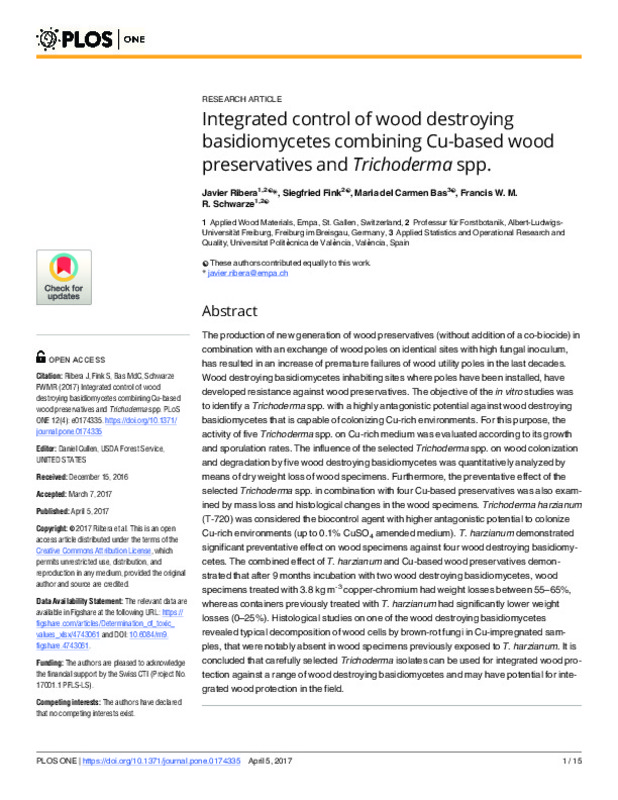JavaScript is disabled for your browser. Some features of this site may not work without it.
Buscar en RiuNet
Listar
Mi cuenta
Estadísticas
Ayuda RiuNet
Admin. UPV
Integrated control of wood destroying basidiomycetes combining Cu-based wood preservatives and Trichoderma spp
Mostrar el registro completo del ítem
Ribera, J.; Fink, S.; Bas Cerdá, MDC.; Schwarze, FWMR. (2017). Integrated control of wood destroying basidiomycetes combining Cu-based wood preservatives and Trichoderma spp. PLoS ONE. 12(4). https://doi.org/10.6084/m9.figshare.4743061
Por favor, use este identificador para citar o enlazar este ítem: http://hdl.handle.net/10251/81401
Ficheros en el ítem
Metadatos del ítem
| Título: | Integrated control of wood destroying basidiomycetes combining Cu-based wood preservatives and Trichoderma spp | |
| Autor: | Ribera, Javier Fink, Siegfried Bas Cerdá, María del Carmen Schwarze, Francis W. M. R. | |
| Entidad UPV: |
|
|
| Fecha difusión: |
|
|
| Resumen: |
[EN] The production of new generation of wood preservatives (without addition of a co-biocide) in combination with an exchange of wood poles on identical sites with high fungal inoculum, has resulted in an increase of ...[+]
|
|
| Palabras clave: |
|
|
| Derechos de uso: | Reconocimiento (by) | |
| Fuente: |
|
|
| DOI: |
|
|
| Editorial: |
|
|
| Versión del editor: | http://dx.doi.org/10.1371/journal.pone.0174335 | |
| Código del Proyecto: |
|
|
| Agradecimientos: |
|
|
| Tipo: |
|








